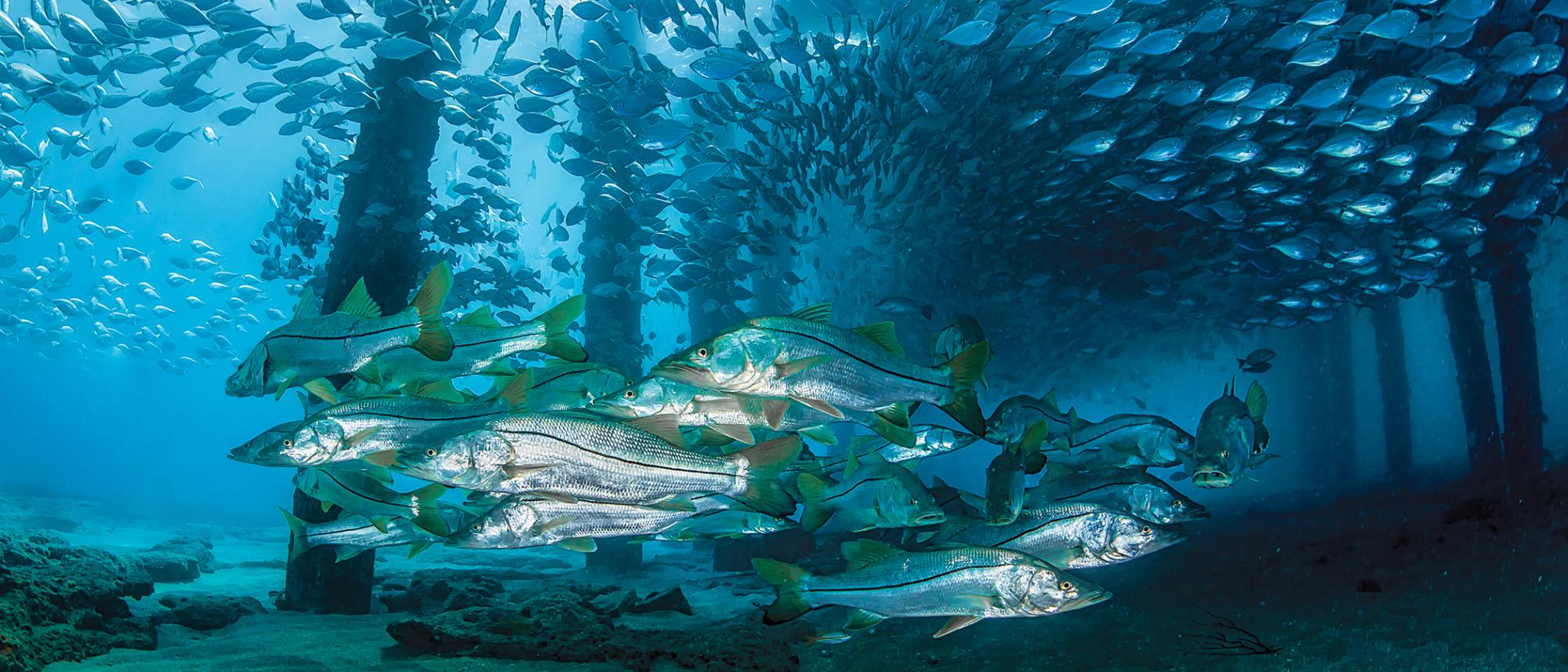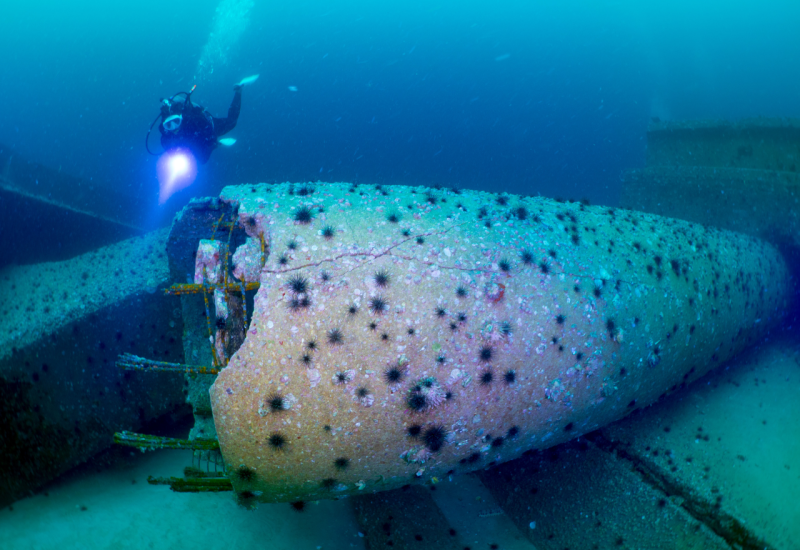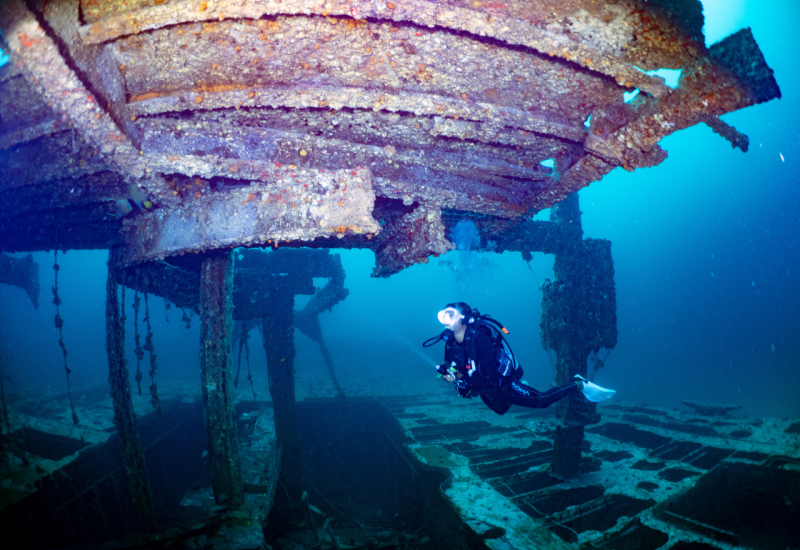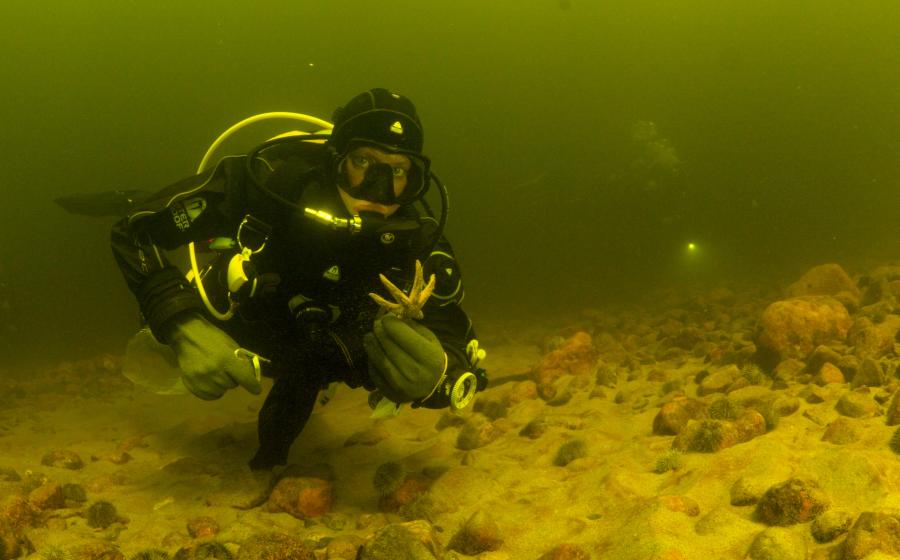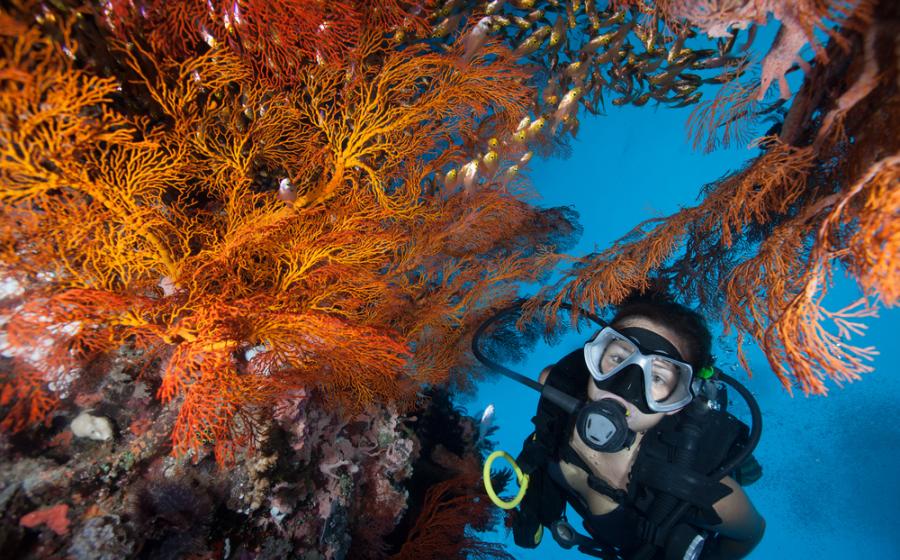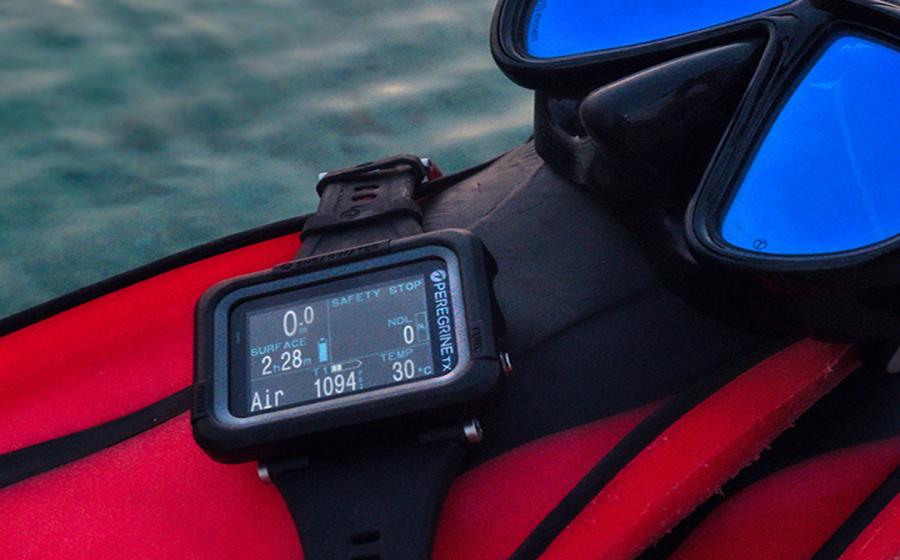Life Under the Pier
For many, Hurricane Irma was a costly natural disaster, especially in the Florida Keys, where high winds cut a deadly path stretching from Marathon to Key West.
Our favorite dive sites were clogged with mucky water from September through the end of 2017, and the habitat of many creatures was damaged or destroyed.
The winds also pummeled Florida’s east coast, including Lauderdale-by-the-Sea, a popular tourist town with great beaches. The eastern half of 900-foot Anglin’s Fishing Pier was closed because of serious damage. While this was a blow to local fishermen, Irma ironically provided divers — who are not typically allowed within 300 feet of the structure — a rare opportunity to find out what lurked below one of South Florida’s major Atlantic piers.
In a word: everything! The entire food chain dwells under the pier, from nurse sharks to tiny colorful blennies. Vast schools of baitfish — Atlantic bumpers and scad — are permanent residents, along with thousands of wafer-thin lookdowns and moonfish. The deeply slanted foreheads of the former — like the aftermath of a collision with a Mack truck — make them arguably the most unusual creatures under the pier. When you spend hours with them on this 15-foot dive, they begin to treat you like family.
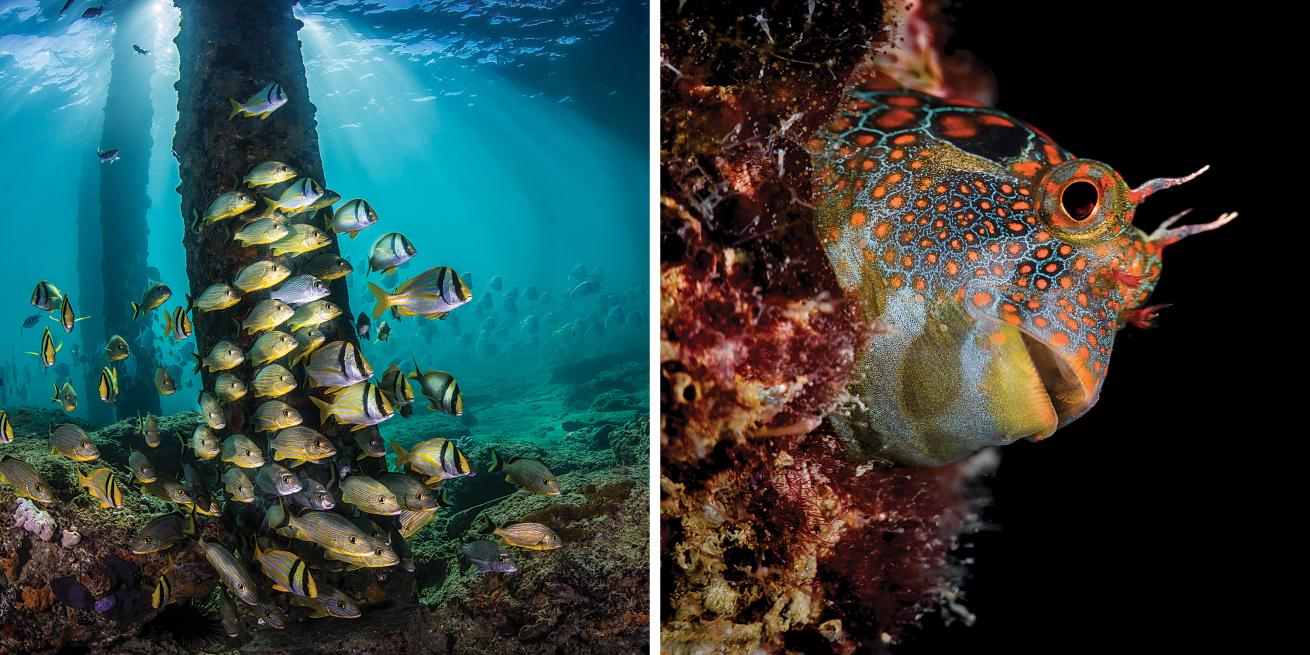
Jerome IsraelPorkfish and grunts tuck in next to a piling (left); a tessellated blenny.
This made for great photo opportunities, although the visibility is a force to be reckoned with. Last summer was challenging: Rain, runoff and unusually large amounts of rotting sargassum turned the water a milky green. The environmental pressures on both coasts of Florida are an enormous problem that must be dealt with in earnest for the sake of our creatures and the state’s No. 1 industry: tourism.
This pier, in fact, is Florida’s version of the famous jetties of Raja Ampat, Indonesia; in winter, the place is alive with sea life. The pier is unique in the way the sun pours off its sides and slices through the water or penetrates holes in the deck. The former creates an underwater light curtain; the latter, a laser-beamlike effect.
I dived there periodically starting in December 2017, summoning all of my meager wide-angle photography skills. I learned a lot, especially while shooting the lookdowns, which are like small moving mirrors. Light control was essential; a ton of photos suffered “burnout.” I shot from different angles and at different times of day to emphasize the most dramatic effects from the sun. And I became even more familiar with Lightroom; given the poor visibility, creative post-processing was necessary.
On days when wide-angle photography was too difficult, we had another option: a diverse community of blennies living under the pier, which created some of the best macro opportunities in South Florida. Down there, oranges don’t just grow on trees — they also cover the tessellated blenny, dotting its precocious little face. And who can resist the Molly Miller blennies, which put out the “welcome mat” every time somebody swims by? With gill-to-gill smiles and cute tufts of “hair,” or cirri, these little fish are a favorite photography target.
On some days, yellowtail morays peek out from under brain corals, and nurse sharks snuggle into the sinkholelike architecture. Grunts, snappers and porkfish find safety schooling next to numerous concrete pilings. Angelfish, scrawled filefish and playful groups of parrotfish often join them. When baitfish suddenly disperse like buckshot, you know that medium-size yellow jacks, barracuda and bar runners are not far behind. Large snook act as pier bosses, but for a while they were displaced by an invasion of lusty tarpon.
One morning in June, more than 20 tarpon — 1,500 pounds of love — played mating games right next to me. The lookdowns stayed away from these monsters, which fortunately ignored me while they performed a “bump and grind” against each other and snapped their gill plates like bass drums in excitement. On another morning before daylight, which coincided with low tide, I swam out to capture a dramatic split-screen shot of the lookdowns at sunrise. I reasoned that I’d win a National Geographic photo competition with an image like this. I shot a nice sunrise all right, but the lookdowns didn’t show up; they were hanging out in the middle of the pier. Next time I’ll have to coax them forward.
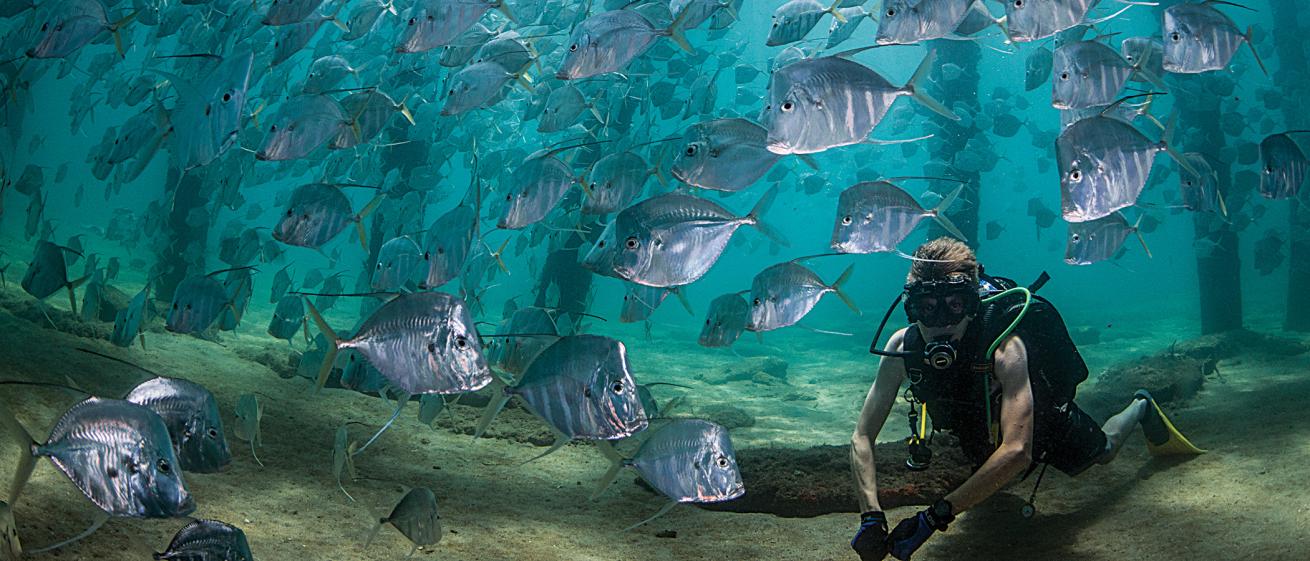
Jerome IsraelA diver is almost lost in a cloud of lookdowns, a most unusual creature.
Of course, all good things seem to come to an end. I wanted to study and photograph this environment for at least a year before writing this article. One day I was shooting, and two freediving spearos swam by — I used to hunt fish, but the thought of spears flying in close quarters really shook me up. Soon kayakers, paddleboarders and snorkelers showed up on weekends. Finally, the city stepped in out of safety concerns. Law enforcement warned divers to stay away. I complied, though one morning in September, I succumbed to temptation and decided to briefly check on my friends. The water was too green and cloudy for pictures, and the lookdowns were at first nowhere to be found. A large school of barracuda was parked along the front of the pier, but as I swam closer to the beach, I finally saw lookdowns in the shadows. With the barracuda around, they maintained a respectful distance.
Which is what I am grudgingly doing as well. It’s posted on the pier: “Stay 300 feet away.” (If the city and pier owner are reading this article, can we find a way to manage diving there so people can enjoy this unique interaction with sea life?)
Moving forward, the future is fuzzy. The pier needs extensive repair to bring it up to code, and several legal matters focused on the pier are currently in court. My only hope is that when the repairs begin, they will have a care for this fragile ecosystem, which is one of Florida’s little wonders.
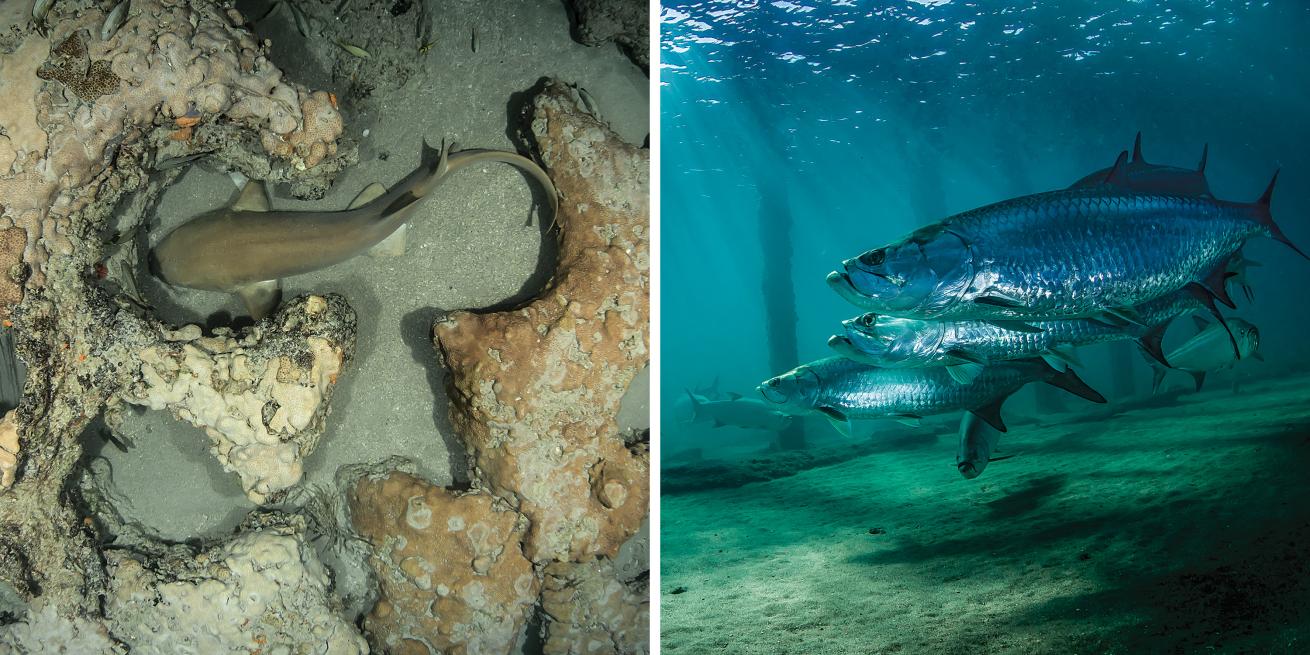
Jerome IsraelA nurse shark (left) gets comfortable in nooks and crannies on the bottom; tarpon scout for mates.
If You Go: Diving Lauderdale-By-The-Sea
Lauderdale-by-the-Sea has several diver entry portals; the most popular is the Datura (street) Portal, which is south of the pier.
The reef begins about 100 yards from shore, and is mostly rubble and a variety of soft corals. After about 50 more yards, divers find lobsters, turtles and nurse sharks under the Swiss-cheese-like reef, which has about 5 feet of relief.
It’s fun to explore the reef north and south: Along the former side are huge star corals; slightly south is the “anemone room,” an outcropping of corals covered with anemones that provide shelter for anemone, sun and squat shrimp.

